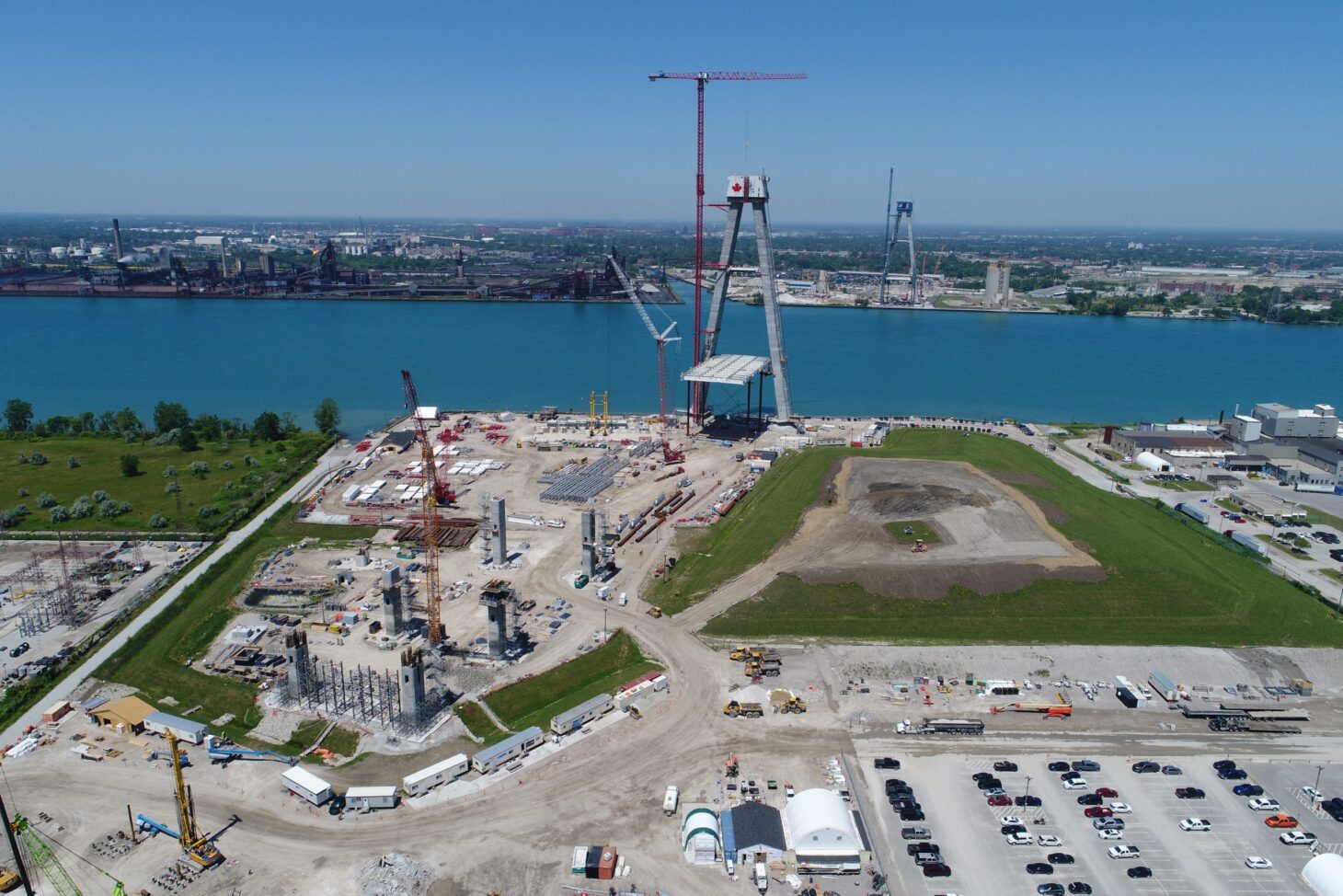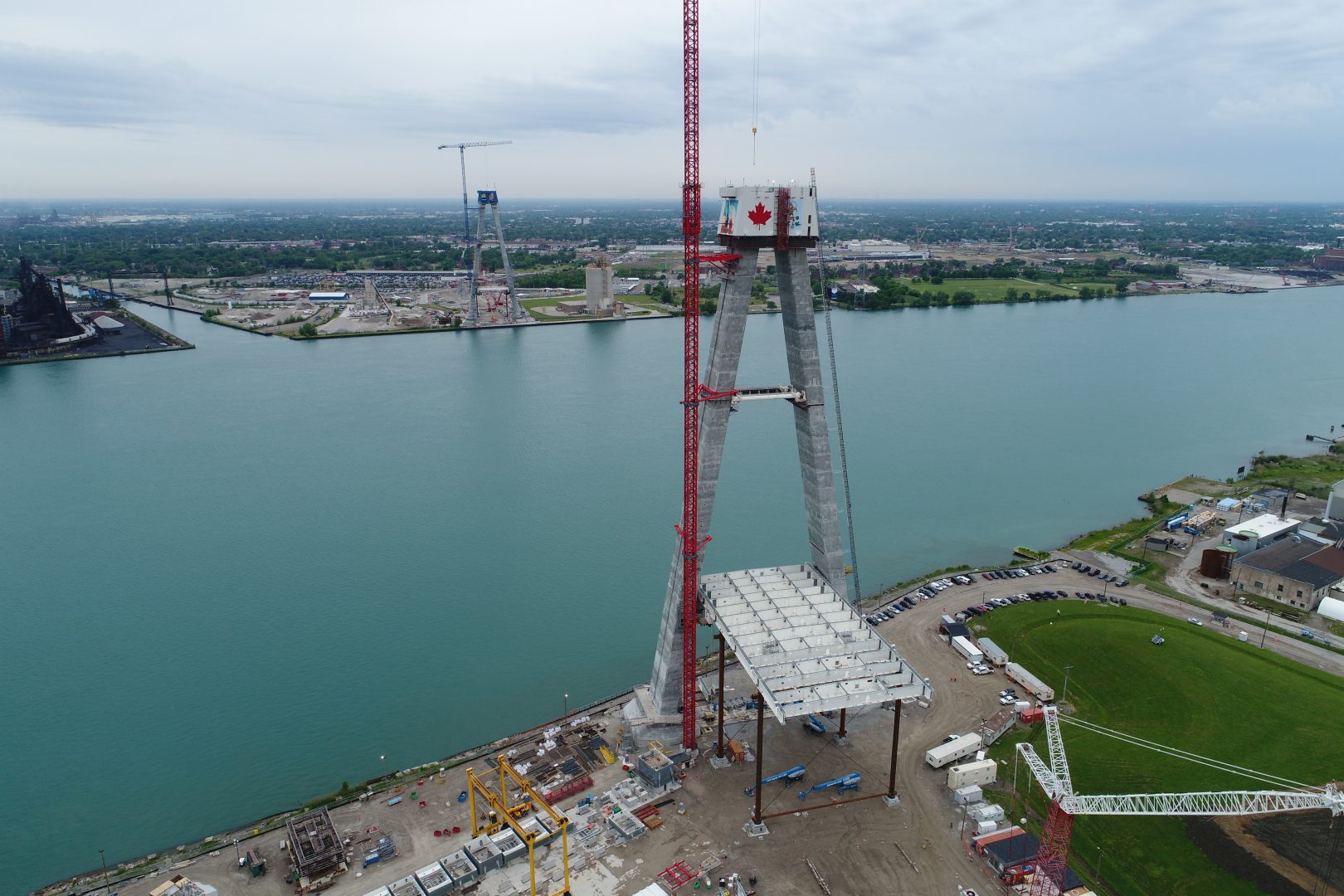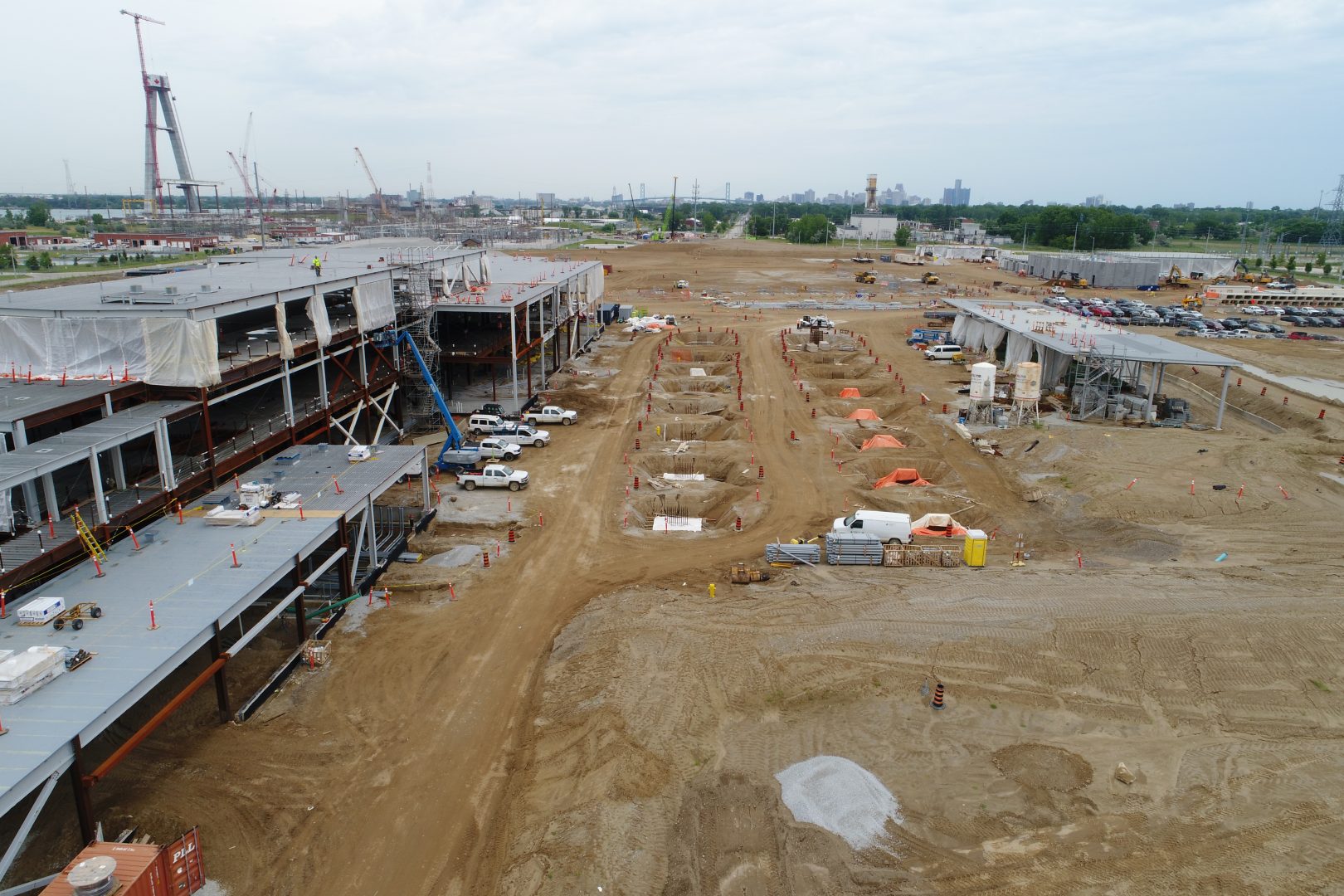
What do you get when you combine one of the world’s greatest hockey players of all time and an impressive structure? The Gordie Howe International Bridge project, of course.
With a completion date slated for 2024, the Gordie Howe International Bridge will connect Windsor, Ont., to Detroit, Mich., and be among the longest cable-stayed bridge in North America – spanning 2.5 kilometres. It will also be the fifth longest cable-stayed bridge in the world.
The Windsor-Detroit Bridge Authority (WDBA) is delivering this $5.7-billion project, which began in October 2018. The project is being carried out through a public-private partnership. The Canadian Government (through its Crown corporation), WDBA and Bridging North America (BNA), WDBA’s private partner responsible for designing, building, financing, operating and maintaining the Canadian and U.S. Ports of Entry and bridge.
The project has four components:
- The bridge
- The Canadian entry point and customs plaza
- The U.S. entry point
- Linking Highway 401 in Ontario to Interstate
- 75 in Michigan
The bridge will accommodate three Canadian-bound lanes and three U.S.-bound lanes for cars and commercial traffic. There are several unique features of the Gordie Howe International Bridge project. For instance, having the bridge piers located on land, the bridge’s main section will extend over the Detroit River and be constructed using a technique called the unbalanced cantilever system or stick build.

“In response to public consultation and feedback, the project will also include a dedicated multi-use path that will accommodate pedestrians and cyclists. The integration of the multi-use path will benefit the communities, as it will support active transportation and a healthy lifestyle, as well as enhance cycle tourism across the border,” said WDBA director of communications Tara Carson.
Project challenges
All projects have their share of technical and logistical challenges and one of this magnitude is no exception. Carson says one of the bridge team’s challenges was the approach to the bridge’s construction.
“Original methods followed the traditional balanced cantilever construction. However, obstructions in early days, including limited water access, deep soft clay and winter weather caused BNA to revisit this erection method to mitigate potential delays,” said Carson.
Additional project challenges included:
- Execution of deep foundation works within the immediate vicinity of the Detroit River requiring the implementation of temporary seawall protection (scour protection).
- Artesian groundwater conditions requiring the implementation of groundwater control plans, as well as the implementation of a special underwater concrete mix design for drilled shaft construction.
- Environmental challenges requiring fisheries management and specific management of waste, spoils and concrete washout, hydrogen sulphide gas procedure, and specific erosion and sediment plans.
- Adverse soil conditions requiring the implementation of a group of three-metre diameter drilled shafts with permanent steel underground water.
Deep foundation aspect
Regarding the deep foundation aspect within the scope of the entire construction project, BNA uses some of the following materials: three-metre diameter drill shafts, steel casing 19-millimetre wall thickness, reinforcing steel grade 400W and 41.4 MPa concrete.
The Gordie Howe International Bridge project includes a comprehensive environmental program that addresses over 450 conditions identified in the bi-national environmental assessment process. The BNA completed a bi-directional compressive load test (using O-Cell) on a nonproduction shaft built with the same means and methods as the production shafts to assess the challenges brought on by the design environment, and geology/soil, noise and vibration reduction. In addition, load test results were used to determine rock-socket lengths for the production shafts.
“Each of the tower legs’ foundations are built onto six drilled shafts with a diameter of three metres and a depth of approximately 36 metres down to the bedrock,” said Carson. “All of the six back span piers are built onto one drilled shaft with a three-metre depth approximately 36 metres down to the bedrock. GFL was the main subcontractor for drilled shaft construction.”
Equipment Used
Building North America and its subcontractors are using a wide variety of equipment on the impressive $5.7-billion Gordie Howe International Bridge project, which began in 2018 and is scheduled for completion in 2024. The team used steel piles to support the ramps connecting the U.S. Port of Entry to I-75 and the road and pedestrian bridges over I-75 being constructed as part of the Michigan Interchange work for the project. Some of the equipment used includes:
- Drilling and pressure grouting equipment
- Bauer BG40 drilling rig
- Manitowoc 1600 crawler crane (main crane)
- Manitowoc 2250 service crane
- ICE 44-50 vibratory hammer
- CAT IT14G loader
- Multiple diameter rock augers
- Soil auger
- Multiple diameter core barrels for rock-socket drilling
- Airlifting equipment
- Elevating working platforms (Genie)
- 36-metre mobile concrete pumps with tremie lines for concrete placement
- Concrete mixer trucks
Environment and sustainability
Environmental sustainability measures have also remained at the forefront. For example, the Gordie Howe International Bridge project is an example of sustainable infrastructure that is socially, environmentally and economically responsible. Moreover, it protects communities on both sides of the border from the effects of climate change.
“The project will be a high-performance, sustainable building and infrastructure project, designed for resource efficiency and cost-effectiveness (both in construction and operation) with healthy and productive environments,” said Carson.

“Emphasis is being placed on measurable high-performance green building and infrastructure strategies and processes, integrating products, components and systems, improving building performance by significantly reducing energy consumption, increasing facility flexibility, and improving user comfort and satisfaction.”
WDBA and BNA have earned a prestigious Envision Platinum Award for this once-in-a-generation project. This certification is the highest possible distinction from the Institute for Sustainable Infrastructure, which recognizes efforts to achieve sustainable development and environmental performance standards at every stage of an infrastructure project, from design to construction and implementation.
Carson says safety has been at the forefront of this project and will remain until completion.
The Gordie Howe International Bridge project includes a comprehensive environmental program that addresses over 450 conditions identified in the bi-national environmental assessment process. It also consists of a community benefits plan with $20 million in direct community investments that create opportunities to enhance economic, social and environmental conditions – from trail connections to road and park improvements, home repairs and arts and culture initiatives. Both plans were developed because of hundreds of consultation meetings with Michigan and Ontario residents, Indigenous Peoples, business owners, and community and municipal leaders.
BNA was required to create and implement a sustainable management policy as part of the project agreement. The policy used a roadmap to help achieve performance targets for LEED and Envision certifications.
Safety first
Carson says safety has been at the forefront of this project and will remain until completion. “Safety is a core value at BNA, and their success stems from the commitment of our joint BNA/WDBA health and safety teams and all staff. We have a great video called ‘Nine Questions with Health and Safety Managers’ that highlights the approach to safety that is being undertaken.”
The team is also proud to have received the Infrastructure Health and Safety Association John M. Beck Award in 2021. This award recognizes the contributions a project-based Joint Health and Safety Committee in the Ontario construction industry has made to health and safety in the previous year. “To date, this project has completed over three million hours without a lost time injury,” Carson said.